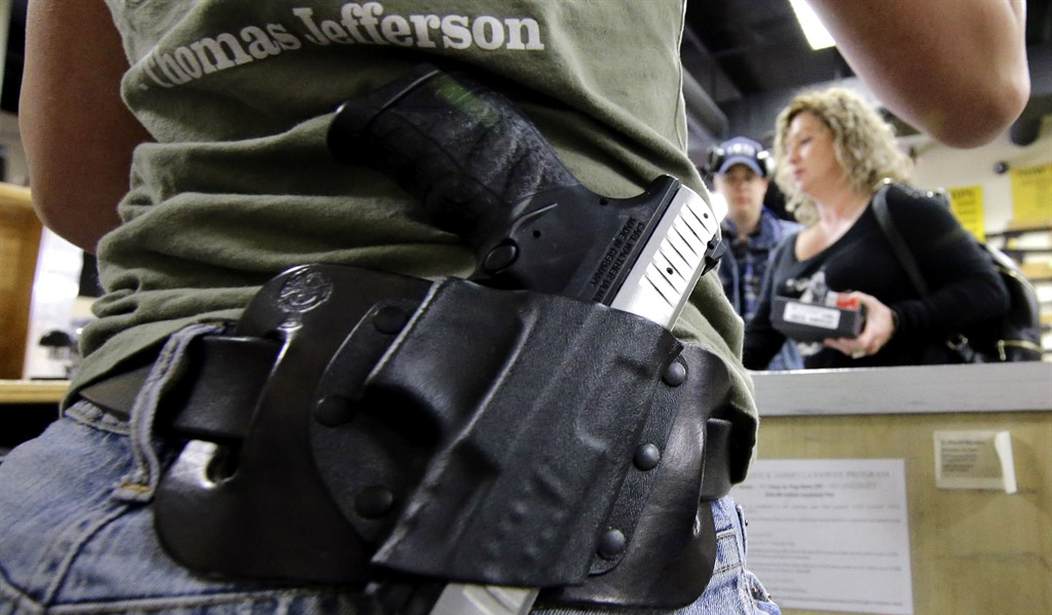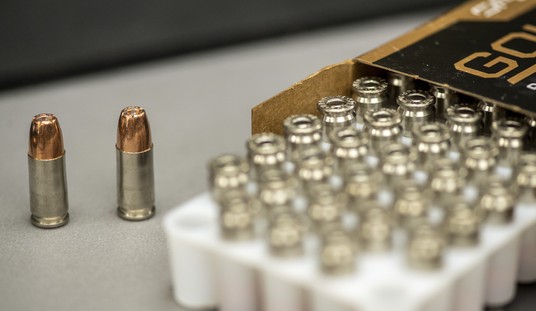Oregon’s ban on “large capacity” magazines and the state’s “permit-to-purchase” scheme remain on hold for now after a hearing in rural Harney County on Tuesday, with the judge who originally granted a restraining order against the anti-gun ballot measure telling both sides in a court challenge to the new restrictions that he’ll issue a formal ruling on a request for an injunction by this Friday.
Harney County Circuit Judge Robert S. Raschio did say during the hearing, however, that the permit-to-purchase portion of Measure 114 will not take effect, at least until the state can prove that the system is fully operational and won’t result in residents being unable to exercise their right to acquire a firearm for self-defense.
“Any complete bar on the ability to secure a firearm would be unconstitutional even under strict scrutiny,” said Harney County Judge Robert Raschio on Tuesday morning.
The order was also the precursor to several hours of oral arguments and witness testimonies about whether the judge should place a preliminary injunction against ballot Measure 114’s ban on high-capacity magazines. While Judge Raschio made no formal decision on that proposed injunction Tuesday, he said he would issue an opinion no later than Friday, Dec. 16 at noon.
Altogether, Tuesday’s court hearing marked an eventful day for gun advocates in Oregon, many of whom tuned-in to the district court’s live feed to witness the marathon hearing about why the judge should or should not issue a preliminary injunction against Oregon’s ballot Measure 114.
…
It was a different story for the issue of magazine capacity, however, discussion of which occupied another six hours in court Tuesday.
Plaintiffs largely argued that by capping magazines to 10 rounds and including restrictions on the use of extenders and removable baseplates, the state has essentially made it impossible to purchase legal firearms in Oregon from gun manufacturers. To prove a point, attorney Tony Aiello called upon firearm dealer Ben Callaway as an expert witness, who said online vendors like MidwayUSA or Zanders Sporting Goods no longer ship firearms to Oregon if they can be modified to hold more than 10 rounds.
Yet, the real challenge for the groups was to prove that guns with a 10-round capacity or more were commonly used for self-defense in 1859, a requirement made by Oregon Supreme Court’s protection of the right to bear arms. But while expert witnesses from both sides of the injunction agreed that multi-shot firearms existed around that time, there was disagreement as to whether these weapons were of common use.
The availability of multi-shot firearms in 1859 shouldn’t be the determining factor in whether or not they’re protected by the Second Amendment. As the Supreme Court noted in the Caetano case, arms that are in common use today but weren’t around at the time of the Founding are still protected by the text of the Second Amendment.
The Court has held that “the Second Amendment extends, prima facie, to all instruments that constitute bearable arms, even those that were not in existence at the time of the founding,” District of Columbia v. Heller, 554 U. S. 570, 582 (2008) , and that this “ Second Amendment right is fully applicable to the States,” McDonald v. Chicago, 561 U. S. 742, 750 (2010) . In this case, the Supreme Judicial Court of Massachusetts upheld a Massachusetts law prohibiting the possession of stun guns after examining “whether a stun gun is the type of weapon contemplated by Congress in 1789 as being protected by the Second Amendment.” 470 Mass. 774, 777, 26 N. E. 3d 688, 691 (2015).
The court offered three explanations to support its holding that the Second Amendment does not extend to stun guns. First, the court explained that stun guns are not protected because they “were not in common use at the time of the Second Amendment’s enactment.” Id., at 781, 26 N. E. 3d, at 693. This is inconsistent with Heller’s clear statement that the Second Amendment “extends . . . to . . . arms . . . that were not in existence at the time of the founding.” 554 U. S., at 582.
The court next asked whether stun guns are “dangerous per se at common law and unusual,” 470 Mass., at 781, 26 N. E. 3d, at 694, in an attempt to apply one “important limitation on the right to keep and carry arms,” Heller, 554 U. S., at 627; see ibid. (referring to “the historical tradition of prohibiting the carrying of ‘dangerous and unusual weapons’ ”). In so doing, the court concluded that stun guns are “unusual” because they are “a thoroughly modern invention.” 470 Mass., at 781, 26 N. E. 3d, at 693–694. By equating “unusual” with “in common use at the time of the Second Amendment’s enactment,” the court’s second explanation is the same as the first; it is inconsistent with Heller for the same reason.
Finally, the court used “a contemporary lens” and found “nothing in the record to suggest that [stun guns] are readily adaptable to use in the military.” 470 Mass., at 781, 26 N. E. 3d, at 694. But Heller rejected the proposition “that only those weapons useful in warfare are protected.” 554 U. S., at 624–625.
For these three reasons, the explanation the Massachusetts court offered for upholding the law contradicts this Court’s precedent.
What the court should actually be looking for are statutes in place at the time of Oregon’s founding that are historical analogues to the ammunition capacity restriction the state wants to put in place today, and I don’t think anything like that exists. I’m not aware of any state law or even a local ordinance in the state that barred the carrying or possession of revolvers or other multi-shot firearms at the time the state constitution was approved, and given that these types of bans are modern inventions of the anti-gun lobby, I suspect that finding a 19th century analogue is going to be difficult… at least without stretching the bounds of credulity as U.S. District Judge Karen Immergut did when she upheld the magazine ban in a federal lawsuit filed by the Oregon Firearms Federation and several county sheriffs.
With Rashcio pledging to deliver his ruling on the request for an injunction against Measure 114 by noon Pacific time on Friday, we won’t have too long to wait before we learn whether the magazine ban can take effect, though if Raschio does impose an injunction the state will appeal once again to the state Supreme Court. That body has already declined to overturn Raschio’s initial restraining order against Measure 114, however, and if Raschio keeps the status quo in place while the constitutionality of Measure 114 is being litigated there’s a very good chance the state’s highest court will do the same.









Join the conversation as a VIP Member